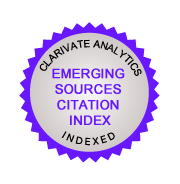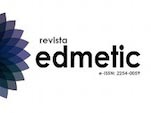THE CLASSROOM AS A COMPLEX SYSTEM: TOWARDS A FORMALIZATION OF THE ORGANIZATION LIFE IN THE CLASSROOM
DOI:
https://doi.org/10.24310/innoeduca.2017.v3i2.3062Keywords:
complex systems, autopoiesis, education, class interactions, fuzzy setAbstract
Moving towards a concept of education that connotes and defines the educational from the dynamics exhibited by the organization of learning in the classroom requires the use of the sciences of complexity. Assuming the theory of non-linear dynamical systems to understand the phenomena of learning interactions as a history of molecular, sensory and relational coherence is the great challenge of the cognitive sciences. The present study makes a theoretical-empirical review of studies in dynamic systems based on describing the organization of living beings, human life and classroom life. It is proposed that the classroom is a complex system of learning interactions where the semiotic mediation acts as linguistic homeostasis determining the future of the system. In particular, fuzzy set theory is proposed as a mathematical tool of non-linear dynamics to formalize the organization of learning in the classroom.Downloads
Metrics
References
Astudillo, H., Navarrete, M ., Jara, C., y Faúndez, C. (2015). Evidencia de Auto Aprendizaje como Manifestación de un Comportamiento Colectivo Espontáneo en el Aula. Formación Universitaria, 8(1).
Córdova, F., y Leyton, G. (2013). A Fuzzy Control Heuristic Applied Non Linear Dynamic Systems Using a Fuzzy Knowledge Representation. International Journal of Computers Communications & Control, 8(1), pp. 50-60.
Di Paolo, E. (2015). Interactive time-travel: On the intersubjective retromodulation of intentions, Journal of Consciousness Studies, 22, 49–74.
Di Paolo, E. y De Jaegher, H. (2012). The interactive brain hypothesis. Frontiers in Human Neuroscience, 6, 163.
Fossa, Cornejo, C., y Carré, D. (2016). Análisis semiótico en secuencias de interacción empáticas y no empáticas: Un estudio microgenético. Revista de Psicología USP, 27(3), 441- 449.
Froese, T. (2010). From cybernetics to second-order cybernetics: A comparative analysis of their central ideas. Constructivist Foundations, 5(2), 75-85.
Froese, T. (2011). Breathing new life into cognitive science. Avant. The Journal of the Philosophical- Interdisciplinary Vanguard, 2(1), 95-111.
Froese, T., y Fuchs, T. (2012). The extended body: A case study in the neurophenomenology of social interaction. Phenomenology and the Cognitive Sciences, 11(2), 205-235.
Gupta, M., Ragade, R., y Yager, R. (1979). Advances in Fuzzy Set Theory and Applications. North-Holland.
Ibáñez, A. (2008). Dinámica de la cognición. Editorial: Comunicaciones Noreste Limitada.
Kandel, A. (1982). Fuzzy Techniques in Pattern Recognition, Wiley-Interscience.
Mason, W., y Watts, D. (2012). Collaborative learning in networks, Proceedings of the National Academy of Sciences, 109(3), 764-769.
Maturana, H., y Varela, F. (1973). De máquinas y seres vivos: una teoría sobre la organización biológica. Santiago: Editorial Universitaria.
Maturana, H., Mpodozis, J., y Letelier, J. C. (1995). Brain, language and the origin of human mental functions. Biol Res., 28(1), 15-26.
Maturana, H. R., y Mpodozis, J. (2000). The origin of species by means of natural drift. Revista Chilena de Historia Natural, 73, 261-310.
Maturana, H. R. (2011). Ultrastability ... autopoiesis? Reflective response to Tom Froese and John Stewart. Cybernetics & Human Knowing, 18(1-2), 143-152.
Maturana, H., y Dávila, X. (2015). El árbol del vivir. Santiago de Chile: MvP Editores.
Mercer, N. (1997). La construcción guiada de conocimiento: el habla de profesores y alumnos. Barcelona: Paidós.
Mercer, N. (2001). Palabras y mentes: cómo usamos el lenguaje para pensar juntos. Barcelona: Paidós.
Mercer, N. (2007). Dialogue and the development of children’s thinking: a sociocultural approach. London: Routledge.
Mercer, N. (2010). The analysis of classroom talk: Methods and methodologies. British Journal of Educational Psychology, 80, 1-14.
Mercer, N., y Howe, C. (2012). Explaining the dialogic processes of teaching and learning: The value and potential of sociocultural theory. Learning, Culture and Social Interaction, 1, 12-21.
Radovic, D., y Preiss, D. (2010). Patrones de discurso observados en el aula de matemática de segundo ciclo básico en Chile. Psykhe, 19(2), 65-79.
Rosales, J., Vicente, S., Chamoso, J., Núñez, D., y Orrantia, J. (2012). Teacher-student interaction in joint word problem solving. The role of situational and mathematical knowledge in ordinary classrooms. Teaching and Teacher Education, 28, 1185-1195.
Sánchez, E., y Rosales, J. (2005). La práctica educativa. Una revisión a partir del estudio de la interacción profesor-alumnos en el aula. Cultura y Educación, 70(2), 147-173.
Scott, P. (2008). Talking a way to understanding in science classrooms. In N. Mercer, y S. Hodgkinson (Eds.), Exploring talk in school (pp. 17–36). London: Sage.
Thompson, E., y Cosmelli, D. (2011). Brain in a Vat or Body in a World? Brainbound versus Enactive Views of Experience. Philosphical Topics,39(1).
Valsiner, J. (2002). Forms of dialogical relations and semiotic autoregulation within the self. Theory & Psychology, 12(2), 251-265.
Valsiner, J. (2003). Beyond social representations: a theory of enablement. Papers on Social Representations, 12, 7.1-7.16
Valsiner, J. (2004). Semiotic autoregulation: dynamic sign hierarchies constraining the stream of consciousness. Paris, França: Sage.
Varela, F., Maturana, H., y Uribe, R. (1974). Autopoiesis: The organization of living systems, its characterization and a model. Biosystems, 5, 187-196.
Varela, F. (1980). Describing the logic of the living In: M.Zeleny (Ed.), Autopoeisis: A theory of the living organization (pp.36-48). New York: North-Holland.
Videla, R., Leyton, G., y Rossel, S. (en prensa). Análisis de la interacción de clases de profesores destacados en matemáticas: aproximación desde un estudio de caso en Chile. Revista Cultura y Educación.
Zadeh, L., Fu, K., Tanaka, K., y Shimura, M., (1975). Fuzzy Sets and their Applications to Cognitive and Decisions Processes. Academic Press, Inc.
Downloads
Published
How to Cite
Issue
Section
License
All contents published by Innoeduca. International Journal of Technology and Educational Innovation are subject to Creative Commons Attribution-Nocomercial-NoDerivatives 4.0 International License, whose complete text can be consulted at https://creativecommons.org/licenses/by-nc-nd/4.0/legalcode. Thus, copying, distribution, public communication, derivative works and commercial use of content are permitted as of the aforementioned issue provided that the source and the author of the text are cited.
It is the responsibility of the authors to obtain the necessary permits for images that are subject to copyright.

This work is licensed under a Creative Commons Attribution-NonCommercial-NoDerivatives 4.0 International License.








1.jpg)


242.png)







